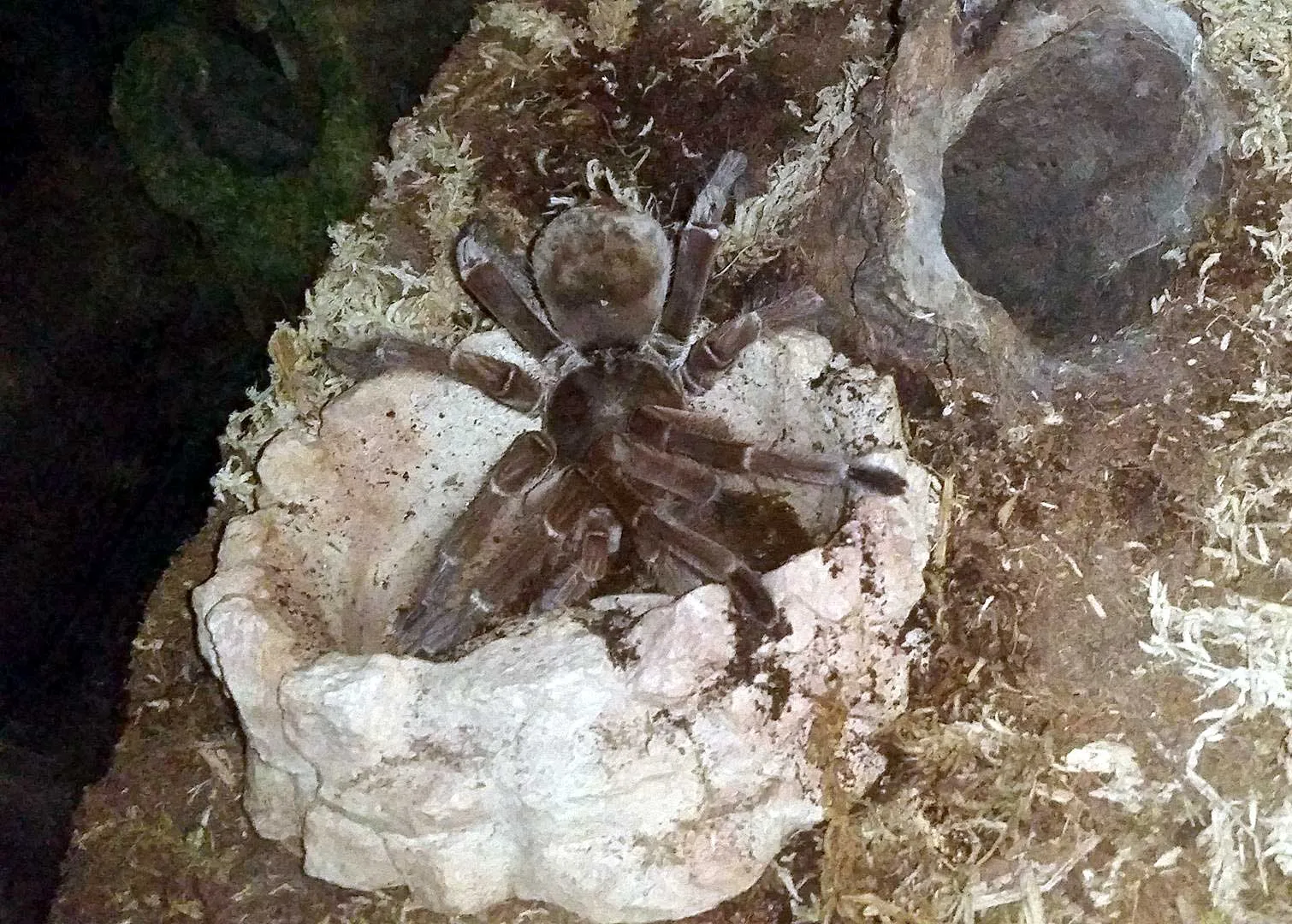Understanding Tarantula Hydration Needs
Keeping your tarantula properly hydrated is critical to its health and well-being. Just like any other living creature, tarantulas need water to survive. They use water for various physiological processes, including molting, maintaining body functions, and general health. Ensuring access to clean, fresh water is a fundamental aspect of tarantula care, often overlooked by new keepers. Dehydration can lead to serious health issues, and in severe cases, it can be fatal. This guide will provide you with the information you need to decide if tap water is safe for your tarantula.
Why Water is Essential for Tarantulas
Water plays several vital roles in a tarantula’s life. It’s necessary for transporting nutrients throughout their bodies, aiding in waste removal, and regulating body temperature. Moreover, water is essential for the molting process. During molting, tarantulas shed their exoskeletons to grow, and this process requires significant hydration. Without adequate water, molting can become extremely difficult or even deadly. Additionally, water contributes to the overall health of the tarantula by supporting various metabolic processes and ensuring the proper functioning of its internal organs. Access to clean water is, therefore, a non-negotiable aspect of tarantula care.
Dehydration Risks in Tarantulas
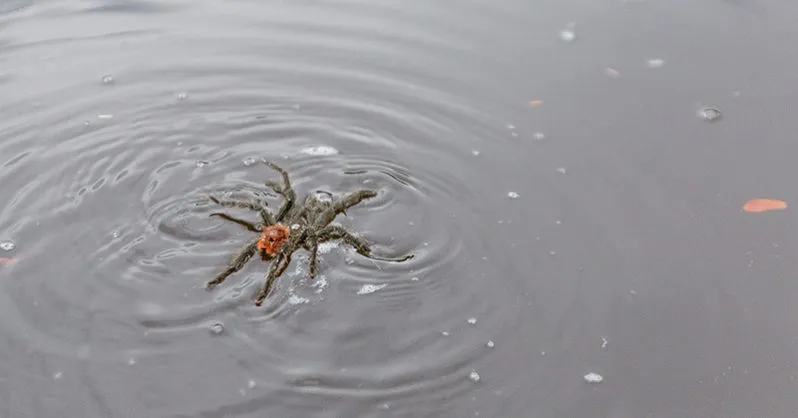
Dehydration in tarantulas can manifest in several ways and lead to serious health problems. A dehydrated tarantula may appear lethargic, with a sunken abdomen, and wrinkled skin. This can lead to difficulties during molting, potentially trapping the tarantula in its old exoskeleton. Prolonged dehydration can weaken the spider, making it more susceptible to diseases and infections. Severe dehydration can cause organ failure and, eventually, death. Regularly monitoring your tarantula for signs of dehydration and ensuring constant access to fresh, clean water is essential for preventing these risks and maintaining your pet’s health.
The Composition of Tap Water
Tap water, while safe for human consumption in many areas, often contains substances that can be harmful to tarantulas. The quality of tap water varies greatly depending on your location and the municipal water treatment processes. In many areas, tap water undergoes treatment to remove harmful bacteria and contaminants, but this process can introduce other substances that may not be ideal for tarantulas. Understanding what is in your tap water is the first step in determining whether it is suitable for your pet.
Common Contaminants in Tap Water
Tap water can contain a variety of substances that could be detrimental to a tarantula’s health. These contaminants can range from chemicals added during the treatment process to naturally occurring minerals. It is essential to be aware of the potential presence of these substances and their effects on your tarantula.
Chlorine and Chloramine Effects
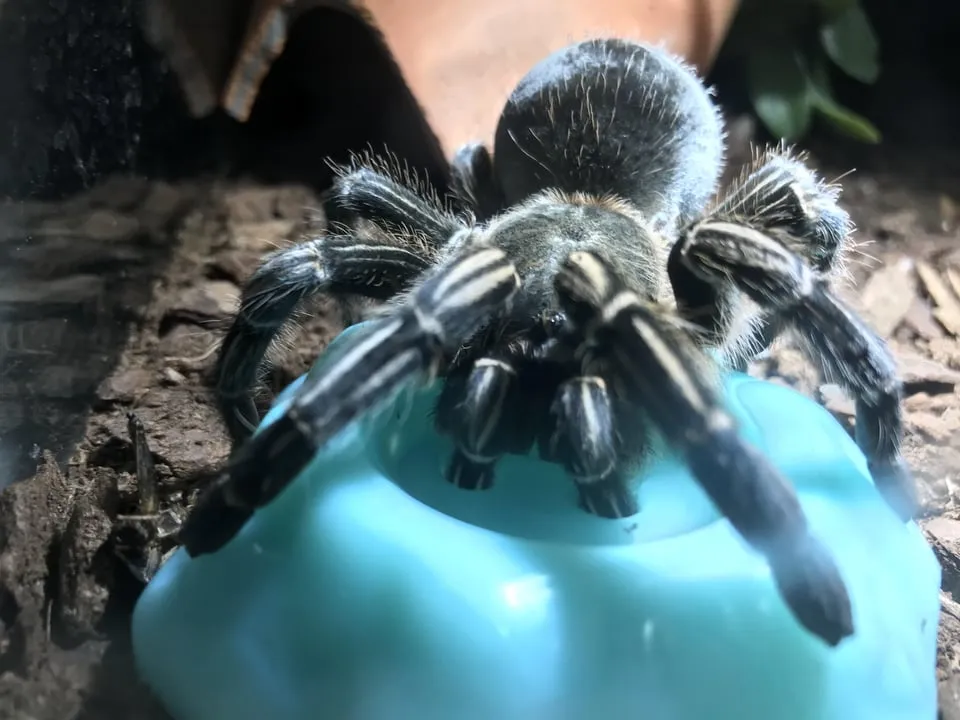
Chlorine and chloramine are common disinfectants added to tap water to kill bacteria. While these chemicals are generally safe for humans in low concentrations, they can be harmful to tarantulas. Tarantulas are very sensitive to chemicals and can suffer from health problems if exposed to these disinfectants. Chlorine can evaporate from water if left to sit for a while, but chloramine does not evaporate easily. Therefore, if your water source uses chloramine, it’s crucial to find an alternative water source for your tarantula.
Heavy Metals and Minerals
Tap water may also contain heavy metals like lead or copper from old pipes, and high levels of minerals. Heavy metals can accumulate in a tarantula’s body over time, leading to toxicity and health complications. Excessive mineral content can interfere with molting and potentially affect the tarantula’s overall health. Regular testing of your tap water for these substances is recommended if you are considering using it for your tarantula.
Water Quality and Tarantula Health
The quality of water directly impacts a tarantula’s health. Poor water quality can lead to various health problems, making it crucial to provide clean and safe water. Monitoring the water source and observing your tarantula for any signs of health issues are essential aspects of responsible tarantula care.
Signs of Water-Related Health Issues
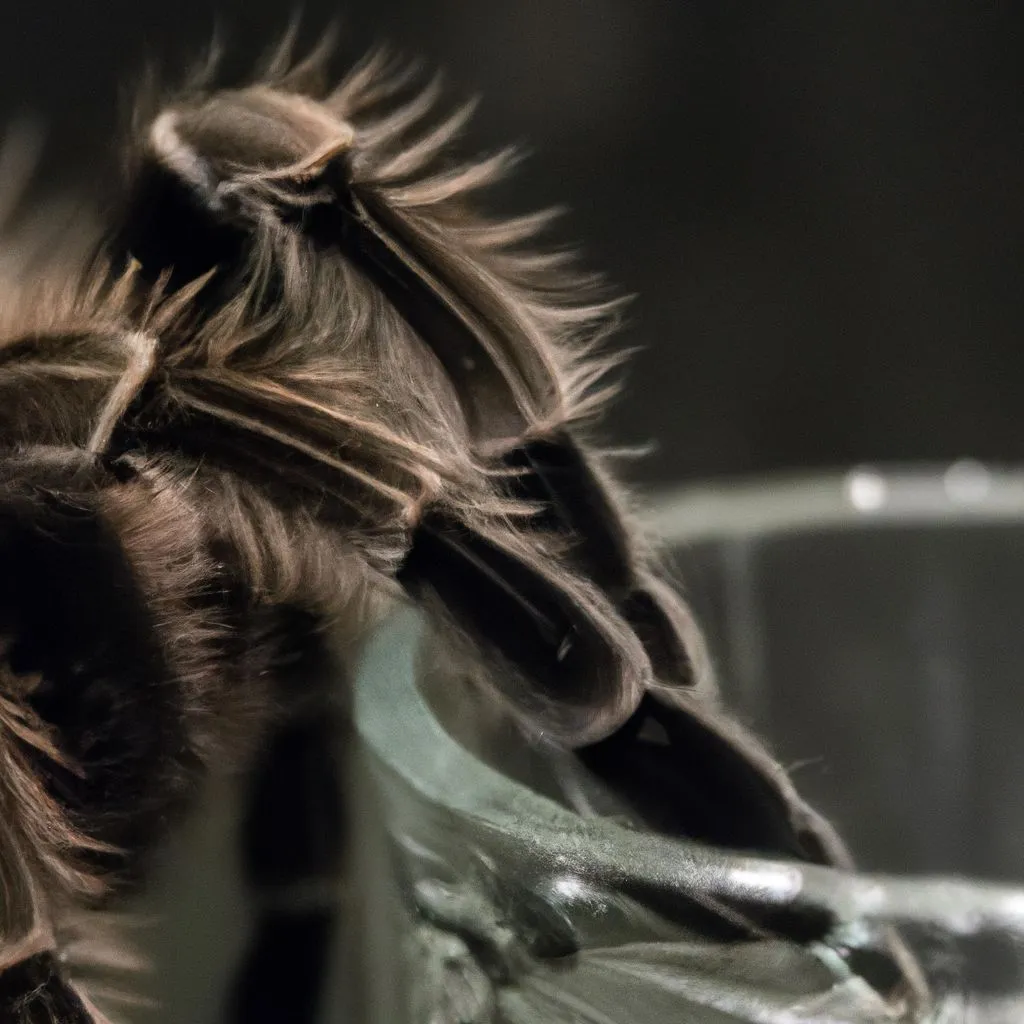
Several signs can indicate that your tarantula is experiencing health problems related to water quality. Being observant of your tarantula’s behavior is very important, since you’re likely to see these signs early on, which will help you solve the problem quickly. It’s critical to be able to recognize them to ensure you can intervene quickly if necessary.
Molting Difficulties
One of the most significant impacts of poor water quality is difficulty during the molting process. If your tarantula is exposed to contaminants, the molting process can become challenging, and the tarantula may get stuck in its old exoskeleton. This can lead to stress, injury, and even death. If you notice your tarantula struggling to molt, it’s essential to check its water source and ensure its water quality is optimal.
Abnormal Behavior
Changes in behavior can be another sign of water-related health issues. A tarantula that is not feeling well may become lethargic, lose its appetite, or display unusual activity levels. In some cases, you might notice tremors or uncoordinated movements. These behavioral changes can be subtle, but they often indicate that something is wrong with your pet’s health. If you notice any abnormal behavior, assess the quality of the water and consider switching to a safer alternative.
Safe Water Alternatives for Tarantulas
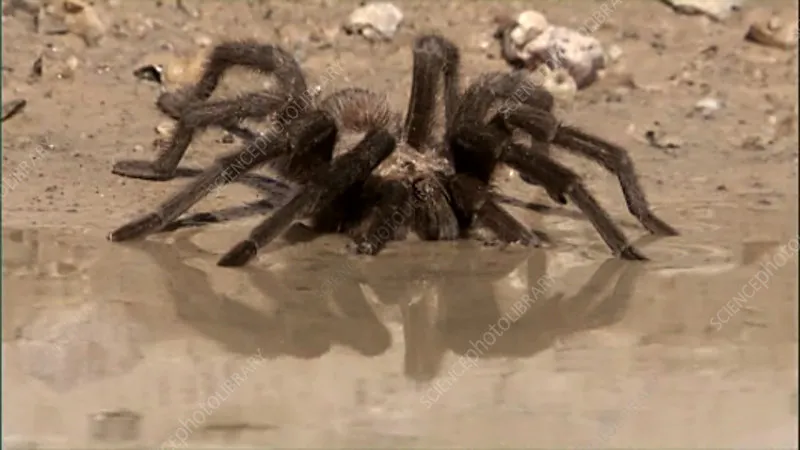
Considering the potential risks associated with tap water, it is often best to use alternative water sources for your tarantula. These alternatives offer a safer option, reducing the risk of exposure to harmful contaminants.
Bottled Water Options
Bottled water is often a convenient and safe option for tarantulas. Opt for spring water or purified water, which is usually free of chlorine and chloramine. Be sure to check the label to confirm that the water does not contain added minerals or other additives. Regular bottled water is generally a better option than tap water for maintaining your tarantula’s health. Bottled water provides a consistently safe and reliable source of hydration for your tarantula.
Distilled and Reverse Osmosis Water
Distilled water and reverse osmosis (RO) water are excellent choices for tarantulas. Distilled water is produced by boiling water and collecting the steam, which removes most impurities. Reverse osmosis water is filtered through a membrane that removes a wide range of contaminants, including heavy metals and minerals. Both options provide a highly purified water source, making them ideal for sensitive pets. Using distilled or RO water ensures that your tarantula receives the cleanest water possible, promoting its health and well-being.
Setting Up a Safe Water Source
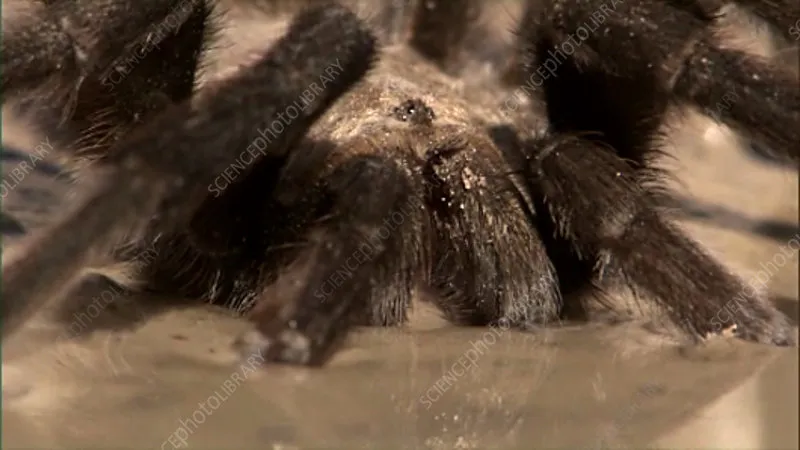
Providing a safe water source involves more than just choosing the right type of water. Proper setup and maintenance are essential to ensure that your tarantula always has access to clean and safe drinking water.
Water Dish Size and Placement
The size and placement of the water dish are critical. Choose a water dish that is shallow enough for the tarantula to access easily but large enough to hold a sufficient amount of water. Place the water dish in a stable location within the enclosure to prevent accidental spills. Make sure the water dish is also placed away from the tarantula’s hide or burrows to keep the substrate dry and prevent the formation of mold or mildew.
Frequency of Water Changes
Regular water changes are essential to maintain water quality. Change the water in the dish at least every other day, or more frequently if you notice any debris or contamination. This helps prevent the growth of bacteria and algae. Regularly cleaning the water dish with a mild soap and water, followed by thorough rinsing, is also important to maintain hygiene. Clean water ensures your tarantula always has access to safe and fresh drinking water, crucial for its health and well-being.
Monitoring Water Quality
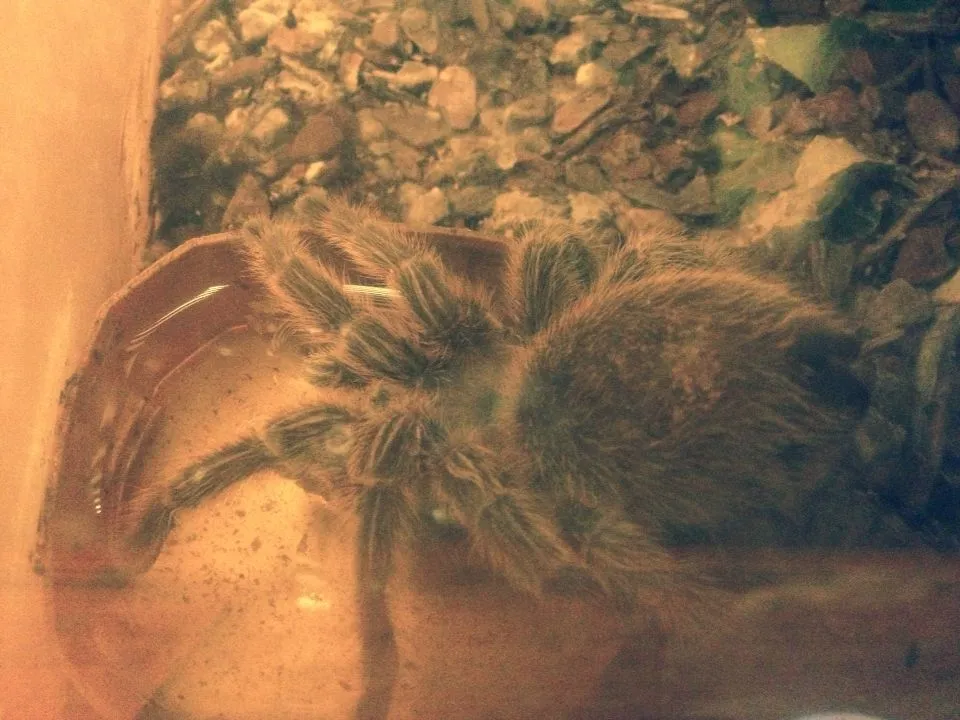
Regularly monitoring the water source is essential. Check the water for any signs of contamination, such as debris, mold, or unusual discoloration. If you notice any issues, immediately replace the water. Consider using a water quality test kit to check for chlorine, chloramine, or other contaminants, especially if you are unsure about your water source. Monitoring the water quality helps to ensure that your tarantula’s water is safe, promoting its health and longevity.
Conclusion
While tap water is safe for human consumption in many areas, it is often not the best choice for your tarantula due to potential contaminants. Prioritizing your tarantula’s health means choosing safer alternatives like bottled spring water, distilled water, or reverse osmosis water. By understanding the risks of tap water, providing clean and safe alternatives, and regularly maintaining your tarantula’s water source, you will ensure that your pet remains healthy and thrives. Your commitment to providing the best possible care, starting with safe hydration, is a testament to your dedication as a responsible tarantula keeper.
